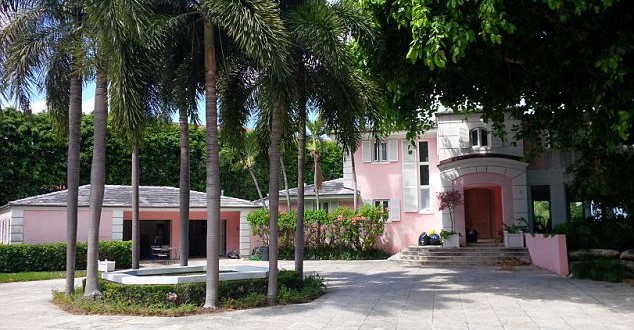Pablo Escobar’s name has been trending since the hit Netflix show Narcos, which documents the life of the Colombian drug lord, hit the web. He’s also been brought up in in the recent manhunt for Mexican drug lord Joaquin “El Chapo” Guzman, as they two men have more than a few similarities.
On Tuesday morning (January 19), an all pink Miami Beach mansion that was purchased by Escobar in the 1980s was demolished.
“I’m very excited to see the house of the devil disappearing right before our eyes,” said the property’s new owner, Christian de Berdouare, who owns the Chicken Kitchen fast-food chain.
“This was the biggest criminal in the history of the world. I would like to be associated with something more uplifting, but nevertheless, it is a part of the city,” he said.
Though the mansion was listed under Escobar’s own name, it’s unclear whether he ever spent any time in Miami Beach.
At the height of his powers, Escobar was one of the wealthiest men in the world, with a cartel that supplied the vast majority of cocaine smuggled into the U.S. Recently recaptured Mexican drug lord Joaquin “El Chapo” Guzman built on Escobar’s expansion and diversified the cocaine business with other drugs.
The war against Pablo Escobar ended on December 2, 1993, amid another of Escobar’s attempts to elude the Search Bloc. Using radio triangulation technology, a Colombian electronic surveillance team, led by Brigadier Hugo Martínez, found him hiding in a middle-class barrio in Medellín. With authorities closing in, a firefight with Escobar and his bodyguard, Alvaro de Jesús Agudelo (a.k.a. “El Limón”), ensued. The two fugitives attempted to escape by running across the roofs of adjoining houses to reach a back street, but both were shot and killed by Colombian National Police Escobar suffered gunshots to the leg and torso, and a fatal gunshot through the ear. It has never been proven who actually fired the final shot into his head, or determined whether this shot was made during the gunfight or as part of a possible execution, and there is wide speculation about the subject. Some of Escobar’s relatives believe that he could have committed suicide.
His two brothers, Roberto Escobar and Fernando Sánchez Arellano, believe that he shot himself through the ears: “He committed suicide, he did not get killed. During all the years they went after him, he would say to me every day that if he was really cornered without a way out, he would shoot himself through the ears.”
Soon after Escobar’s death and the subsequent fragmentation of the Medellín Cartel, the cocaine market became dominated by the rival Cali Cartel until the mid-1990s when its leaders, too, were either killed or captured by the Colombian government. The Robin Hood image that Escobar had cultivated maintained a lasting influence in Medellín. Many there, especially many of the city’s poor whom Escobar had aided while he was alive, mourned his death. About 25,000 were present for his burial.
Agencies/Canadajournal

 Canada Journal – News of the World Articles and videos to bring you the biggest Canadian news stories from across the country every day
Canada Journal – News of the World Articles and videos to bring you the biggest Canadian news stories from across the country every day

